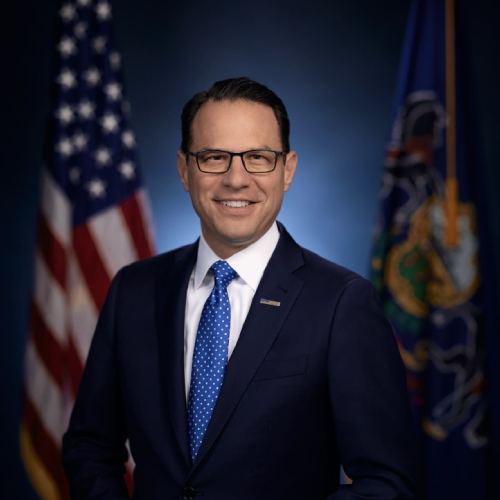Reflecting on the 2024 election, one scenario paints Pennsylvania Governor Josh Shapiro in a favorable light. Indeed, he may owe a debt of gratitude to Tim Walz, who inadvertently aided Shapiro’s political advancement by accepting Kamala Harris’s ill-fated invitation to be her running mate. A recently unveiled book details just how narrowly Shapiro escaped from boarding a doomed political voyage. The process through which Harris chose her VP seemed less grounded in who would best complement her in leading the country and more focused on securing a sycophantic follower who wouldn’t intimidate her reign or aspirations.
When Harris and Shapiro met for a discussion at her residence in August, the interaction was far from smooth. The new publication describes Shapiro as being overly forward, pressuring Harris to elaborate on his responsibilities in the event of his selection, and revealing discomfort with playing a submissive role. This reportedly left Harris with a negative perception of him. What the book overlooks, however, is that Shapiro was simply being an astute politician, aware of his self-worth and courageous enough to inquire about a role that could significantly shape his political trajectory.
The incident underscored a key flaw in the Harris campaign: the predilection towards subservience over competent prowess that may potentially outshine the ill-suited candidate. This contradicts the biased narrative that attempted to depict Shapiro as too strongly aligned with Israel. The authors of the aforementioned book, astoundingly, highlight that this wasn’t the determining factor. In reality, Shapiro’s viewpoints agreed with those of the Biden administration and other VP hopefuls. The core issue was straightforward: Shapiro refused to be anybody’s submissive minion.
When Shapiro reached out to Harris’s team after their interview to convey his growing reticence about abandoning his post as Pennsylvania governor, it was not a case of last-minute hesitation. It was, rather, a shrewd recognition that acting in a subservient role in a doomed campaign would not be a wise career choice.
Today, Shapiro has cleverly been constructing his political future based on his own rules and principles. During the recent Energy and Innovation Summit, he imparted precisely why he was far too indispensable to squander as someone’s deputy. Shapiro successfully negotiated cross-party agreements to secure enormous energy investments for Pennsylvania’s economic future.
Drawing attention to his previous tenure as attorney general, the Hawbaker case clearly demonstrates his pragmatic approach. He relentlessly pursued a construction firm that deceitfully pilfered $20 million from its workers, exemplifying his commitment to champion the causes that resonate with ordinary individuals.
Several Democrats believed that Shapiro could have provided some much-needed credibility to the Harris ticket. Despite his relatively youthful age of 51, Shapiro maintained a moderate political posture, potentially providing a counterbalance to Harris’s perceived leanings to the Californian liberal mindset. Furthermore, his dynamic speaking style led some to parallel his abilities with those of Barack Obama, albeit somewhat jestingly.
This comparison to the former president, unfortunately, has not been without its potential drawbacks. Some party members expressed apprehension that Shapiro was mimicking Obama to a degree bordering on mockery. Recent appearances and social media posts suggest that Shapiro is currently endeavoring to neutralize overt resemblances to Obama.
Naturally, Shapiro has not remained unscathed from obstacles. During the energy summit, there appeared to be evidence suggesting that he was using lifts, perhaps indicating conscious efforts to mask his height. A diminutive stature of 5’6′ could conceivably be a concern in the context of presidential appearances.
Also, there have been allegations of transparency issues with Shapiro which include deleted emails, confidential climate working group meetings, and spending on private law firms funded by taxpayers’ hard-earned money with details cloaked by heavily edited invoices. While significant, these are hurdles that can be overcome, particularly by a dynamic politician who has the power to shape his own political path.
Had he joined the Harris ticket, however, Shapiro would have been inextricably associated with a failed campaign that threw blame at all but their own blunders. Top campaign officials pointed fingers at the tight schedule and a global inflation crisis, yet were incapable of admitting their own missteps.
The book interestingly points out that the rival campaign was most concerned about Shapiro. A particular anecdote underscores this: a farming family from Pennsylvania, scheduled to host the governor for Harris’s VP announcement, backed out when they realized the guest of honor was not Shapiro.
In the grand scheme of things, some career moves might be best to be sidestepped. By demonstrating self-respect and political acumen, Josh Shapiro was savvy enough to recognize and avoid a plummeting political ship. As a result, he was able to dodge a potentially disastrous political snafu.
Democrats eager for a resurgence to national importance in 2028 might well express gratitude towards Shapiro for his discerning judgement. By choosing to prioritise his own political journey over the allure of national prominence, he provided a blueprint for other ambitious politicians in the party.
It’s clear that strategic decisions by politicians, such as Governor Shapiro’s astute rejection of Harris’s vice-presidential offer, have profound implications for their career trajectories. Such moves not only shape their own future but also send ripples resonating through their party echelons.
In summation, the political landscape is a gauge of not only tactical decisions but also integrity and foresight. It seems that some Democrats could possibly learn a valuable lesson from Shapiro’s astute avoidance of what could have been an ill-fated vice-presidential role.

